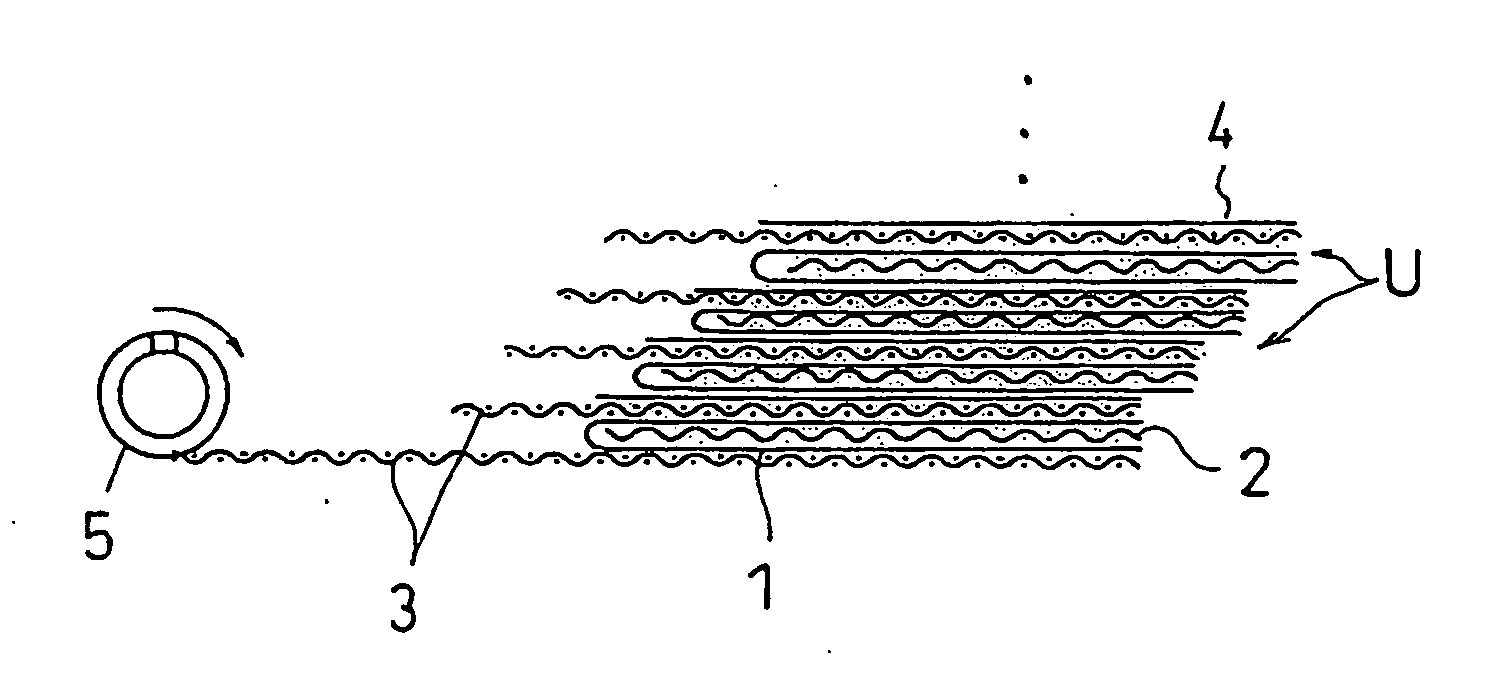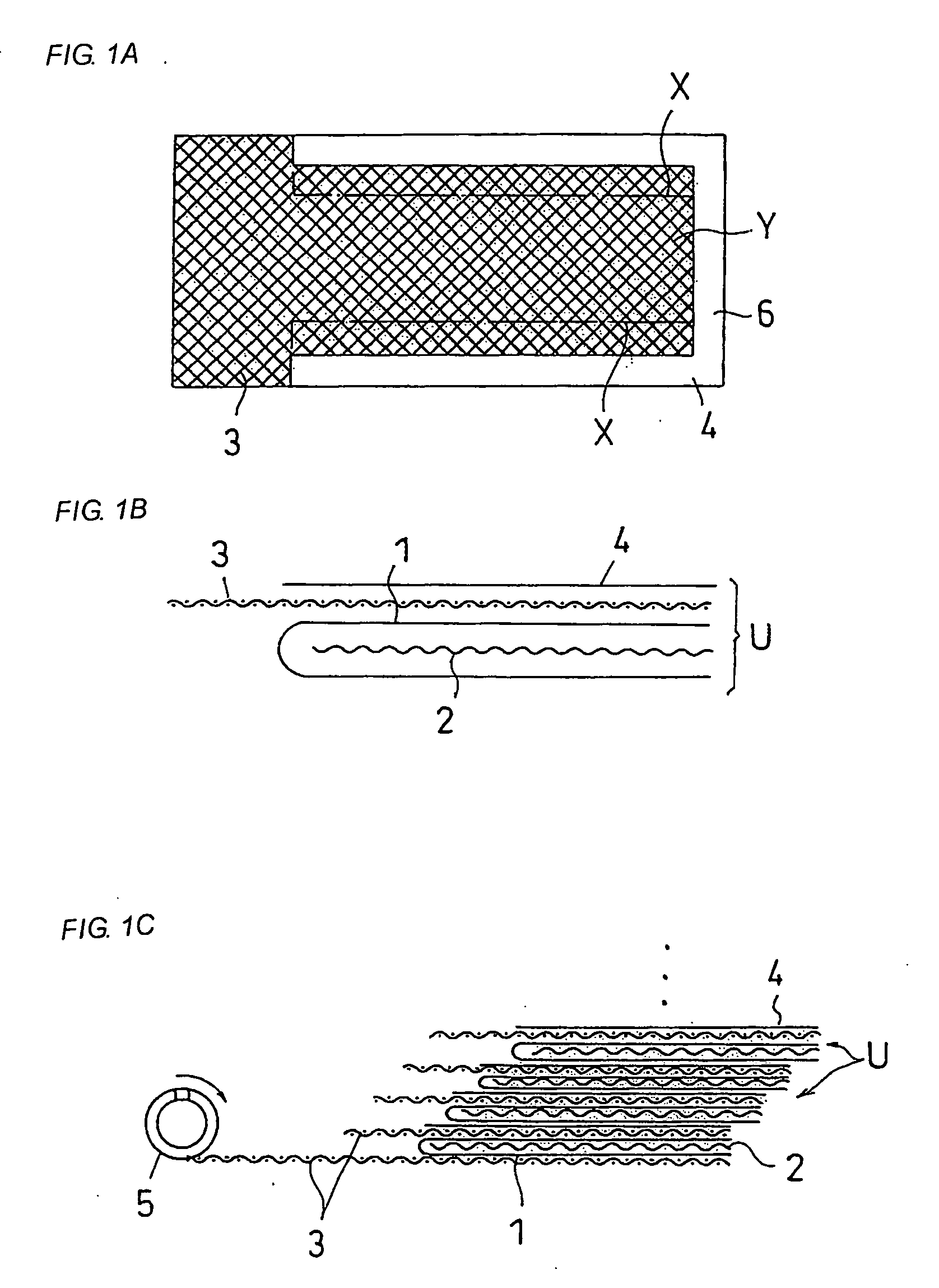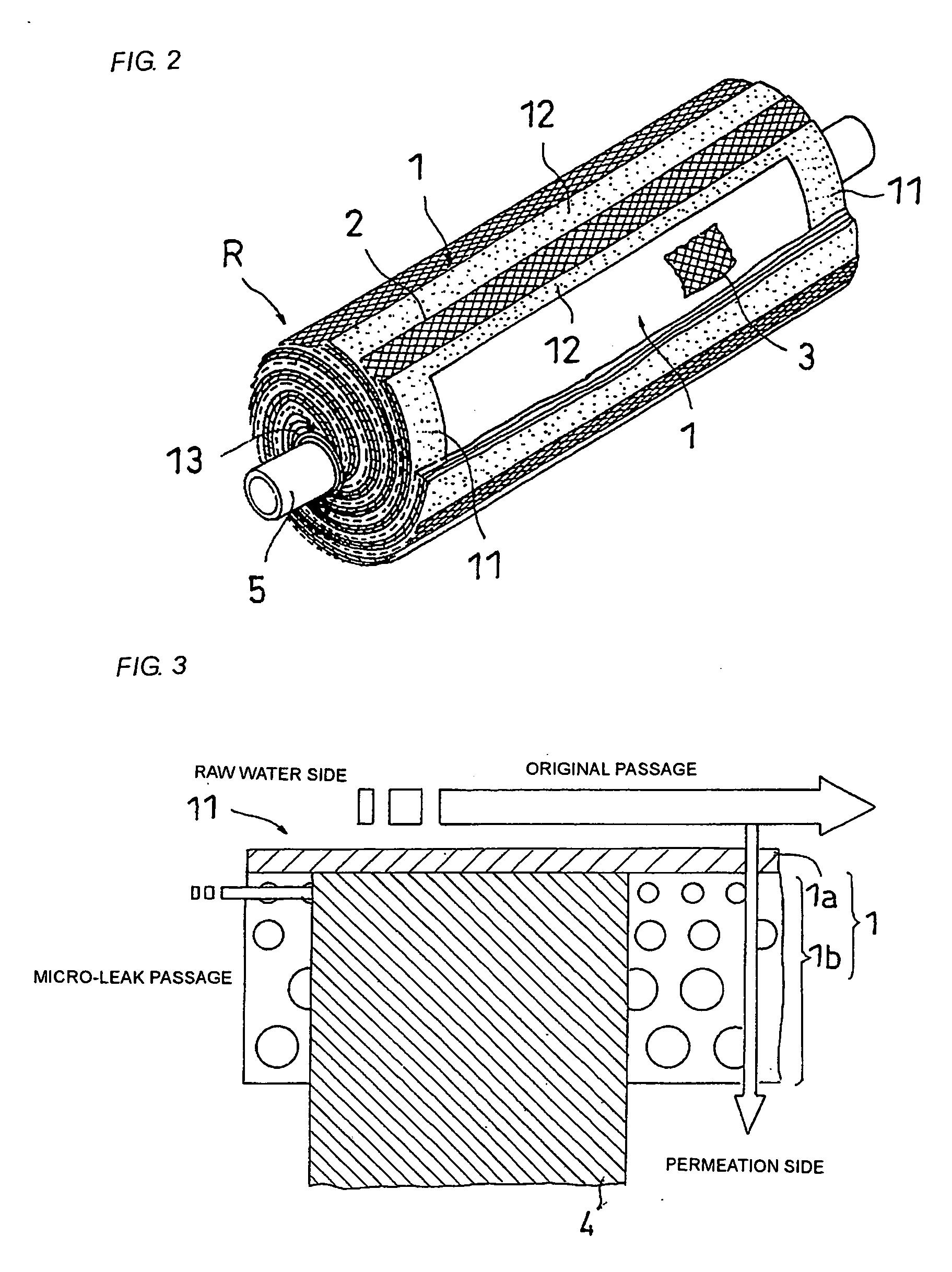Spiral reverse osmosis membrane element, method of manufacturing the same, and its use method
a reverse osmosis and membrane element technology, applied in membrane technology, water/sludge/sewage treatment, chemistry apparatus and processes, etc., can solve the problems of easy wrinkles, insufficient impregnation of adhesives, and insufficient prevention of raw water from flowing in the permeation side, etc., to achieve excellent separation performance, prevent impregnation of adhesives, and prevent micro-leakage
- Summary
- Abstract
- Description
- Claims
- Application Information
AI Technical Summary
Benefits of technology
Problems solved by technology
Method used
Image
Examples
example 1
[0102] 18.3 parts by weight of polysulfone were dissolved in 81.7 parts by weight of dimethylformamide to prepare a film-forming solution. The film-forming solution was cast on a single layer structure non-woven fabric layer having a ratio of a maximum pore diameter to an average pore diameter of 2.9 : 1. Thus, a polysulfone ultrafiltration membrane having a polysulfone layer (porous support) formed on the non-woven fabric layer was obtained. The polysulfone layer had a thickness of 30 μm. Impregnation amount of the polysulfone to the non-woven fabric layer was 4.2 g / cm2.
[0103] 3.0 parts by weight of m-phenylenediamine and 0.15 part by weight of sodium lauryl sulfate were dissolved in water to prepare a film-forming solution A. 0.12 part by weight of trimesic chloride was dissolved in an isooctane solution to prepare a film-forming solution B.
[0104] The film-forming solution A was applied to the polysulfone layer side of the microporous support, and excess solution was removed to ...
example 2
[0109] A composite reverse osmosis membrane was obtained in the same manner as in Example 1, except for using a non-woven fabric having an average pore diameter of 10.2 μm and having a two-layer structure in which those layers are fused at a paper-making step and therefore a barrier layer becoming resistance is not present between the layers. The composite reverse osmosis membrane was wound around a core tube while sealing using a polyurethane (sealing resin) having a viscosity of 25 Pa.s and a sag property of 35 mm. Thus, a spiral reverse osmosis membrane element according to the present invention was obtained.
[0110] Separation of NaCl aqueous solution was conducted in the same manner as in Example 1. The results obtained are shown in FIG. 4 that is a graph showing the relationship between the electroconductivity and the distance.
[0111] Black level of the image data on the face at the skin layer side of the sealing portion was measured in the same manner as in Example 1. As a res...
PUM
 Login to View More
Login to View More Abstract
Description
Claims
Application Information
 Login to View More
Login to View More - R&D
- Intellectual Property
- Life Sciences
- Materials
- Tech Scout
- Unparalleled Data Quality
- Higher Quality Content
- 60% Fewer Hallucinations
Browse by: Latest US Patents, China's latest patents, Technical Efficacy Thesaurus, Application Domain, Technology Topic, Popular Technical Reports.
© 2025 PatSnap. All rights reserved.Legal|Privacy policy|Modern Slavery Act Transparency Statement|Sitemap|About US| Contact US: help@patsnap.com



